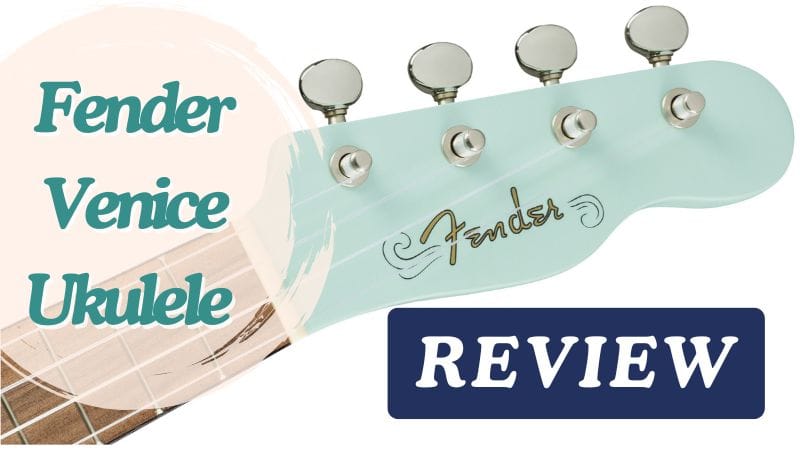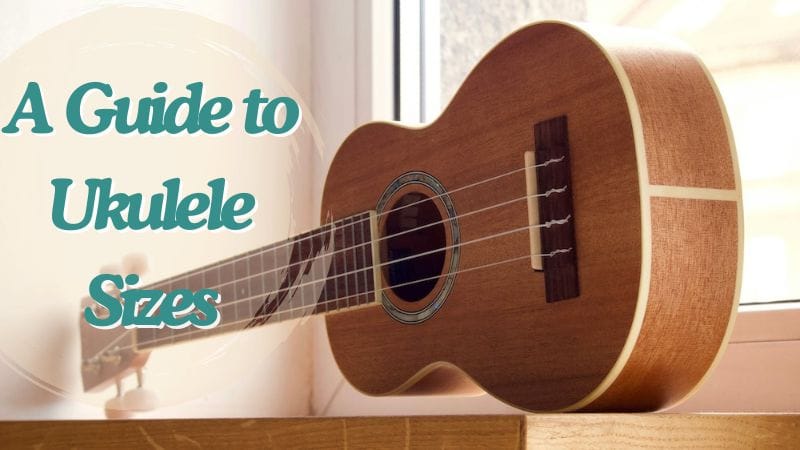The type of wood a ukulele is made from can vary the sound greatly. In this article we’ll cover the different types of ukulele tonewoods and the sound qualities of each.
Written by Jay Searle / Published February 13, 2024
Last updated: February 21, 2024
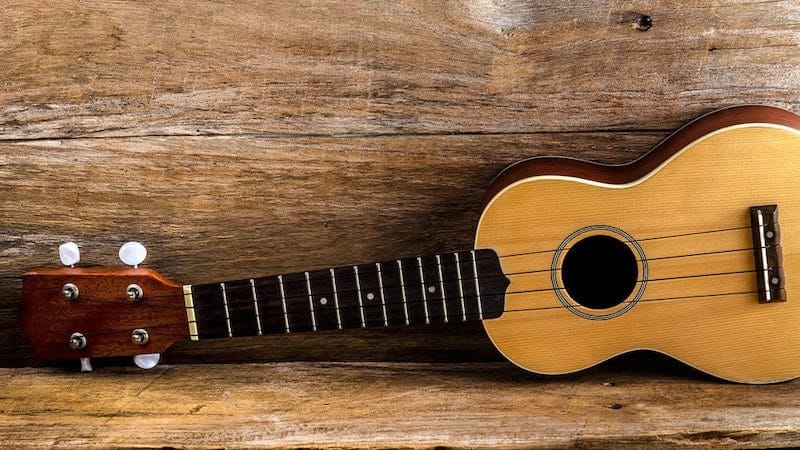
The wood that a ukulele is made of largely influences and defines the sound of the instrument. As the strings are plucked, the sound vibrations bounce off the wooden body, reverberate through the neck and projected from the soundhole.
Every piece plays its part, and you’ll likely come across all kinds of tonewoods in your journey – from traditional Hawaiian koa to the cheaper, more readily available mahogany and everything in between.
But which tonewood sounds the best, especially when considering that the perception of sound is completely subjective?
Ultimately, the answer is: whatever sounds best to you, but we can attempt to quantify tonewoods by their innate sonic signatures, physical attributes, and common applications. In this article, we’ll dive deep into the best ukulele woods and why players love them so much, so let’s start from the top.
1. Koa – The Traditional Ukulele Wood
The first ukuleles were traditionally built from koa, a species of Acacia, that is endemic to Hawaii. It is a well-rounded tonewood that has distinctive grain marks, a golden-brownish hue, and a dominantly warm tone that emphasizes the low frequencies.
Moreover, it’s known for its robust midrange and subtle but present highs, which make it among the most sonically versatile tonewoods around.
Koa wood is mainly used by luthiers of long-running ukulele brands such as Kamaka and Ko’olau, but more modern companies like Kala also offer koa-made ukes.
The main reason why seasoned uke players hail koa as the ultimate ukulele tonewood is that there aren’t many alternatives capable of fully reproducing the traditional Hawaiian ukulele sound.
Without its rich history and relatively modest availability, it might not be an overly impressive tonewood from the perspective of raw performance. It delivers subtle overtones and boasts an impressive sustain, but it’s difficult to compare to tonewoods that have more pronounced tones like ebony, maple, or rosewood.
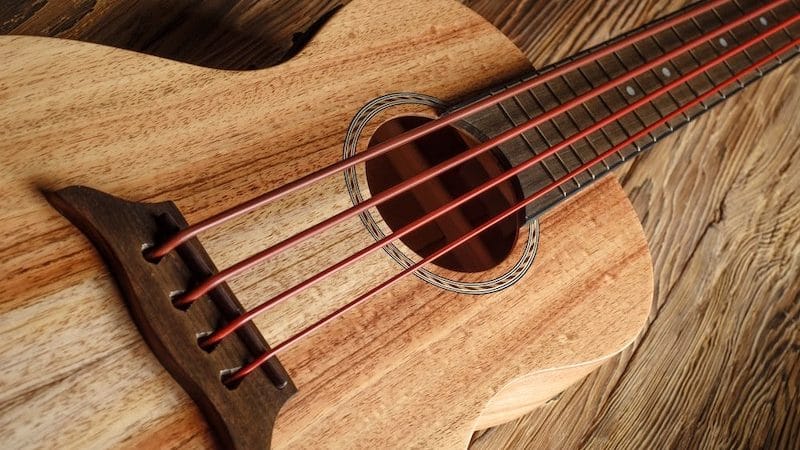
2. Mahogany – A Cheap and Popular Tonewood
Mahogany is among one of the cheapest and most readily available tonewoods on the market. Nearly half of all low to mid-tier ukes are made exclusively from this type of wood, mainly because it’s easy to work with and delivers a consistent level of performance.
In terms of its position on the sonic spectrum, mahogany sits pretty comfortably in the midrange frequencies. In comparison, koa tends to sound a bit brighter and with a slightly weaker character.
However, such a strong emphasis on a single realm of frequencies almost “hurts” the rest of the soundscape. Mahogany’s mids can sound a bit muddied due to the overtones produced, while its highs tend to blend with treble occasionally.
What makes mahogany deserving of the spot on the list of best ukulele tonewoods is its popularity and well-balanced tone. It is often the benchmark used to compare other tonewoods due to its place on the sonic spectrum. A well-made mahogany uke will ensure your tone is robust, especially when strumming away at chords.
3. Acacia – A Solid Performing Ukulele Wood
Acacia is a genus of over 1000 species of plants (of which koa is one) and is among the strongest woods for ukulele construction. It’s roughly twice as strong as the average White Oak and is almost always riddled with grain marks unless multiple finish layers are applied.
From the perspective of sound performance, Acacia is a warm-sounding ukulele wood with strong mids and decent highs. Its sustain can be quite impressive, although the quality of its undertones largely depends on which tonewoods it is paired with. When coupled with a cedar top and rosewood fretboard, Acacia blossoms and lends its balanced tonal output to these otherwise warmer sounding woods.
Acacia-made ukuleles are not nearly as common or as popular as mahogany ukes. If you are looking for a well-made Acacia instrument, Lanikai, Kala, and Enya offer some of the finest models in the contemporary market.
4. Ebony – A Dark, Dense Tonewood
Elegant and gorgeous, ebony is a tonewood of choice for many a boutique-level ukulele. Ukes constructed from this type of wood tend to cost several times more than models made of mahogany, koa, or even Acacia.
Ebony is the “brightest” tonewood available, with distinctly clear and pronounced highs, outstanding sustain, and crispy undertones. A few notes plucked on an ebony-made uke are usually enough to showcase the quality of its tonewoods.
Even though it costs a small fortune to source, ebony is widely used by premier brands like Kala and Ohana. The famed Kala KA-EBY-T tenor is actually one of the most affordable ebony ukuleles available, in case you’re looking for one on a cash-strapped budget.
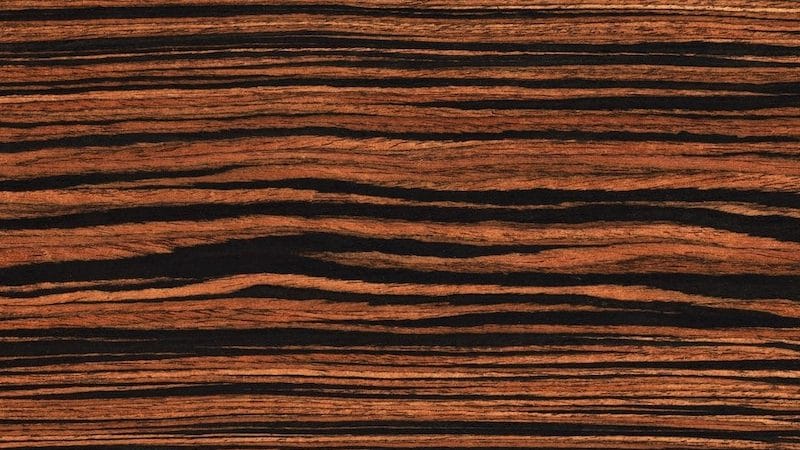
5. Maple – An Underrated, Beautiful Tonewood
Maple is to ebony what mahogany is to koa – a solid alternative with largely similar physical attributes and sonic characteristics. Maple is also easier to work with, a lot cheaper, and loved for its smoothness.
Unlike the expensive ebony, many luthiers would use maple when making ukulele bodies, backs, sides, and even fretboards. Its flexible nature allows this tonewood to be used in a variety of applications, although it’s commonly used to complement warmer-sounding woods like mahogany, Acacia, cedar, or spruce.
Lanikai and Kala have some of the best maple-made ukes; regarding the former, Lanikai’s Quilted Maple acoustic-electric model is among the trendiest choices, while Kala’s KA-ASFM-T-CE is equally popular, albeit a bit pricier.
Solid Wood vs Laminated Ukuleles – How Design Impacts the Sound
Before we wrap up, we should also highlight that the type of ukulele construction affects its tone and sound just as much as its tonewoods. Solid wood ukuleles are generally considered superior to laminated (or what Kala refers to as “layered”) ukes, so let’s explore why.
Solid ukuleles consist of a singular piece of tonewood. Without any cracks in the design, the sound bounces off the wood freely, resulting in a pure, nuanced tone.
On the other hand, laminated ukuleles are made by patching multiple pieces of the same tonewood (type, not necessarily the same wood). Laminate ukuleles can sound good but are rarely comparable to solid wood ukuleles. That said though, you will find that the construction quality has a great deal of impact to the overall sound of the instrument. A well built, high quality laminate ukulele can sound just as good, if not better than a poorly constructed solid one.
The luthier skill required to make ukuleles using solid pieces of tonewood is generally much higher and can therefore drive up the price. Woods such as curly koa are notoriously difficult to bend, so don’t be surprised if you see a price tag upwards of $2000 dollars on a curly koa uke!
Conclusion
As beauty is in the eye of the beholder, so is the decision to dub a tonewood the best ukulele wood in the ears of the listener. You’re not supposed to like a uke or its tonewoods simply because others do.
What we can objectively conclude is that certain tonewoods rose to prominence because they simply work well with ukuleles. Koa, Mahogany, Acacia, Ebony, and Maple are, by far, the most popular choices because they look, feel, and sound better than contemporary alternatives.
The decision to buy an instrument should ideally be based on more than just the type of materials used. But if you’re after a stunning looking instrument, that sounds great, that sports traditional Hawaiian ukulele woods, and you have an unlimited budget; then by all means, do go check out that curly koa uke in your local store!

Jay Searle
Website Founder & WriterJay is a self-professed music nerd and ukulele lover. When not working on the website you’ll find him strumming along to his favorite tunes, spending time with his family, or learning to play the piano.

